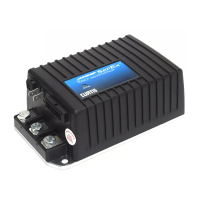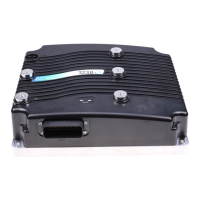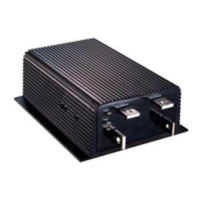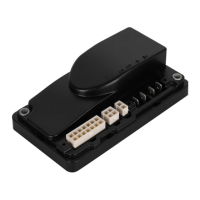Curtis 1230 Manual, Rev. C
51
6
6 — VEHICLE PERFORMANCE ADJUSTMENT
VEHICLE PERFORMANCE ADJUSTMENT
The 1230 controller’s wide variety of adjustable parameters allows many aspects
of vehicle performance to be optimized. This section provides explanations of
what the major tuning parameters do and instructions on how to use these
parameters to optimize the performance of your vehicle. Traction system tuning
is described first, followed by hydraulic system tuning.
The tuning procedures should be conducted in the sequence given, because
successive steps build upon the ones before. It is important that the effect of
these programmable parameters be understood in order to take full advantage
of the 1230 controller’s powerful features. Please refer to the descriptions of
the applicable parameters in Section 3 if there is any question about what any
of them do.
The 1230’s MultiMode™ feature allows the vehicle to be configured
to provide two distinct operating modes. Typically, Mode 1 is optimized for
precision maneuvering and Mode 2 for faster outdoor travel. If your vehicle
is intended to operate in two modes, some of the tuning procedures must be
performed twice—once for each mode.
Three performance characteristics are usually tuned on a new vehicle:
7 Dynamic response
8 Speed, acceleration, deceleration, and brake rates
9 Hydraulic system.
7 Tuning the vehicle’s dynamic response (Control menu parameters)
This procedure accomplishes the major tuning of the vehicle’s response, using
the P Gain and I Gain parameters (Program > Control > P Gain, I Gain). Dur
-
ing this procedure, operate the vehicle in Mode 1.
7-a. First, set the M1 Accel, Decel, and Brake rates to small values,
corresponding to the fastest required rates for your application.
7-b. Test the vehicle’s response to abrupt throttle changes. Increase the
P Gain value until the behavior is responsive but not jerky.
7-c. Test the vehicle’s response to low throttle inputs when starting on
a slope. Increase the I Gain value until the rollback distance is acceptable.
7-d. Retest the vehicle’s response to abrupt throttle changes. Decrease
the I Gain and P Gain values if the behavior is jerky.
8 Tuning the vehicle’s speed, acceleration, deceleration, and brake rates
The fine tuning of the vehicle’s response is accomplished using the rate param-
eters (Program > Vehicle > Rates), see page 25; the speed parameters (Program
> Vehicle > Speeds), see page 26; and the throttle parameters (Program > Vehicle
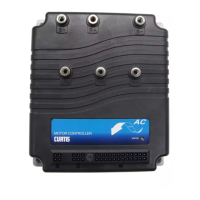
